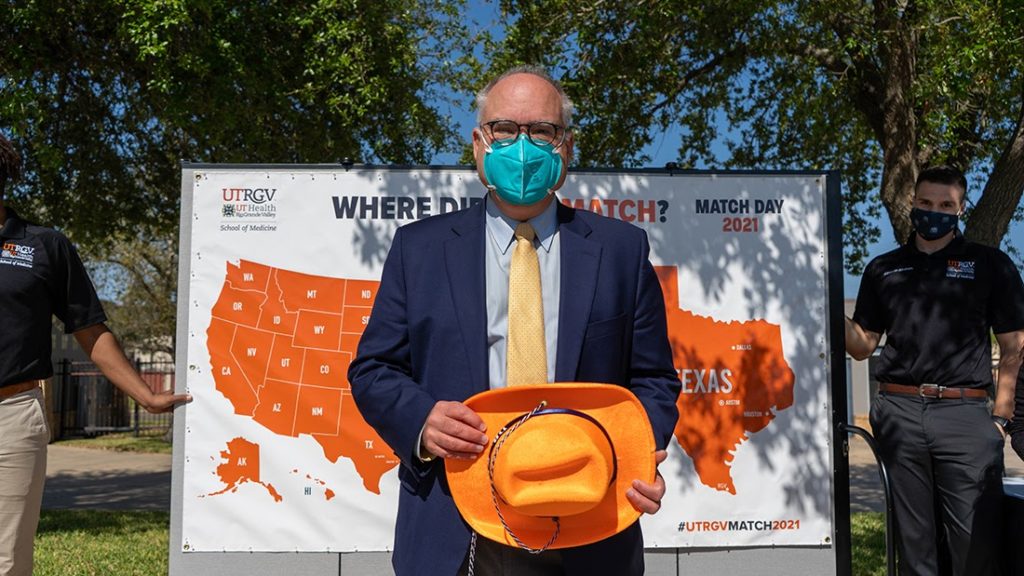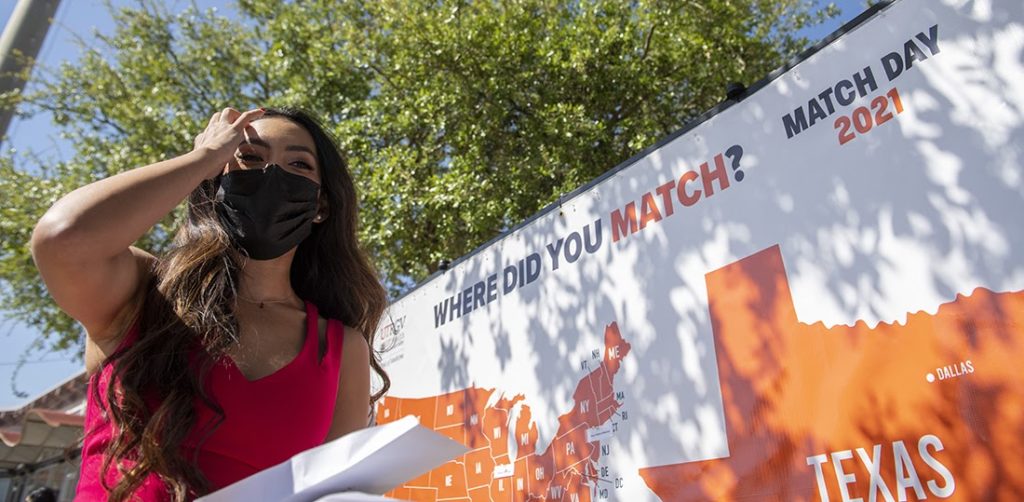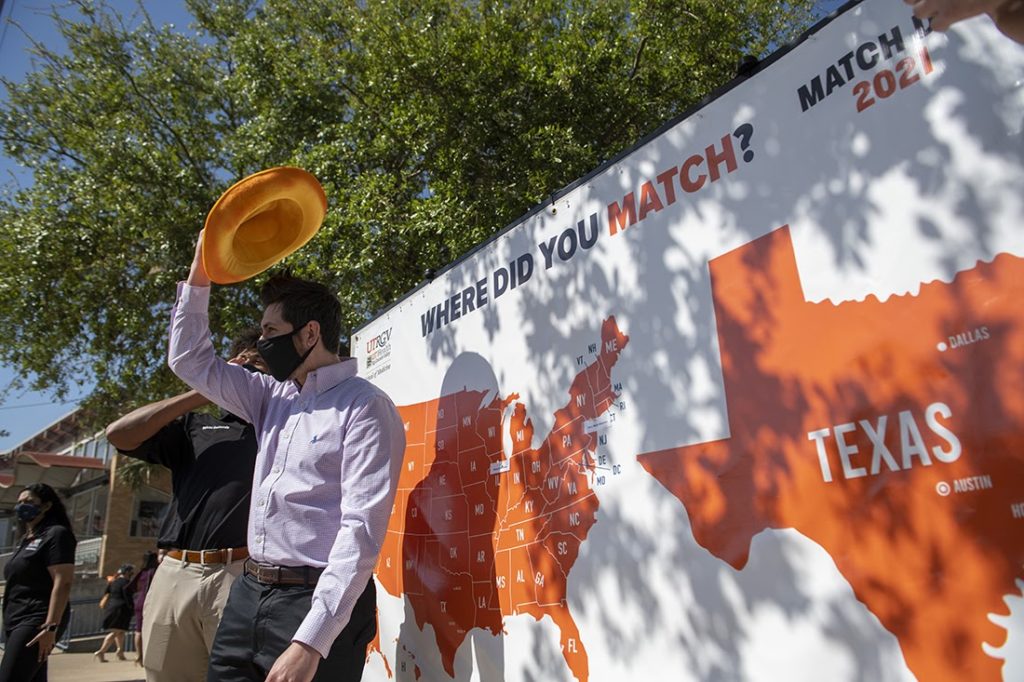Medical students learn residency location on Match Day

Carlos Sanchez/University Marketing and Communications
Brigitte Ortiz | THE RIDER
On March 19, 98% of the UTRGV School of Medicine students learned where they will spend several upcoming years practicing medicine.
John Krouse, dean of the School of Medicine and executive vice president of Health Affairs, said Match Day is a method that is used to pair the graduating seniors from U.S. medical schools with hospitals and health systems that have residency programs available for them.
“So the students, then, as they make their application list can apply to whatever number of those programs that they want and then over the fall months until January, the hospitals will offer invitations to the students that they’re interested in to interview them,” Krouse said.
He said students and hospitals create a ranking list of their top choices.
“The students submit a list of where they would like to go, ranked from one down to however many,” Krouse said. “The hospitals submit a rank list of the students they would like to see come into their programs, ranked from one down to how many they rank.
“And then there’s an algorithm. There’s a computer process where people and programs are matched to the highest match possible at that point. So, basically, it’s an objective system and then on Match Day … all of those students learn where they’re going to be going. All of those hospitals and health systems learn where they match and that, essentially, forms a binding contract.”
“So, we’ve done very well,” Krouse said. “The national average of those that match is about 95%, so for both this year and last year we are ahead of the national average of the number of students that match.
The School of Medicine celebrated these students by hosting an in-person, socially distanced, capacity-controlled event on March 19.

“We did a Match Day celebration at the UTRGV Baseball Stadium and we had students and their families come and sit in designated areas,” Krouse said. “We had in-person presentations by me and by several other faculty at the medical school. Students got the opportunity to announce publicly where they were going to match, so we really created as festive an environment as we could in person given the fact that we are not totally 100% clear of the social distancing … because COVID-19 is still lurking there for us.”
He said students will start their residency around July.
“After that, they are qualified in the specialty of their choice,” Krouse said. “So, they generally will allow that time for what is called board certification examination. That’s when they actually take a written and, perhaps, an oral test. So, now, they verify, certify that they have learned that specialty in a detailed practice.
“Many of those, after they completed their residency, will go into practice. … Some of those that finish residency will go on to another level of training that’s called fellowship. And fellowships are done in a variety of specialties in order to even get further training beyond that of the specialty.”
He said this is a time of transition and great excitement for students. They need to start thinking about what it is going to be like as a resident.
“They need to really think about transitioning to the role of a responsible physician,” Krouse said. “As a medical student, you really are very much a protected learner. You’re learning under very close supervision. When you become a resident, you are now, you’re a physician, you’re a doctor. You have a training license and you will be more independent in the decisions around the care of your patients.”
He said this is what the students have been looking forward to and the School of Medicine has provided a variety of resources for them in the last few months to make that transition as easy as possible for them.

Baine Herrera, a graduating medical student, has been matched to Baylor Scott & White Medical Center in the Central Texas city of Temple.
Herrera will be the first neurology resident to graduate from the UTRGV School of Medicine. He said he submitted 75 applications to hospitals and health care systems.
“I matched to a program I am very excited about,” he said. “I interviewed at 12 places and I interviewed all across the country at some very top programs and I consider Baylor Scott and White one of the top, if not the best, for me, personally.”
Herrera said this new opportunity is about personal growth and prudence. He previously worked in community health in underserved areas from Houston to the Louisiana border.
“I’ve been in health care a long time, prior to medical school, and I just keep growing and growing, and my goal is to be the best neurologist for all of my patients regardless of their ability to pay,” he said. “I want to work with underserved populations and I want to teach. So, I plan on doing a fellowship.”
Herrera advises students going through the match process to network.
“I think early exposure and mentorship are, like, the key to getting into competitive fields,” he said. “Any program that’s considered top of the field can be highly competitive, so networking is key.”
Herrera said he is thankful to have attended the UTRGV School of Medicine and have the opportunity to be part of the Class of 2021. He said it is an incredible cohort that has been through a lot of growing pains with the school.
“Majority of the success that our class enjoyed is because the people that are in the Class of 2021 are incredibly driven, and they’re incredibly motivated to be successful despite the fact that a new university and a new medical school did not have a history of students achieving to the level that the Class of 2021 did,” he said. “Our match list is incredible. We have people going to elite universities and elite programs at the highest and most competitive level.”






